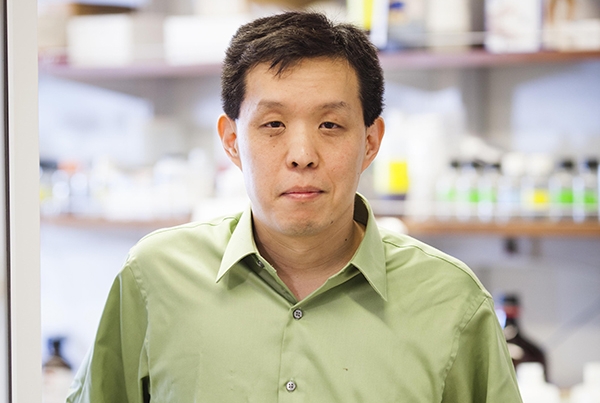Scientists have long worked to understand why antibiotics that shut down most infections offer only limited success with tuberculosis (TB), the leading bacterial cause of death around the world.
A new study by Weill Cornell Medical College scientists has found a possible explanation: an enzyme that allows TB to bypass free radicals that are thought to arise from the stress of antibiotic treatment. Free radicals, which are toxic, have the ability to kill bacteria — but appear to be suppressed by the type of bacteria that causes TB.
"We found a new function for a well-known enzyme linked to the virulence of the TB bacterium, helping to answer the question of what makes this bacteria naturally resistant to antibiotic treatment," says the study’s senior investigator, Dr. Kyu Y. Rhee, associate professor of medicine and associate professor of microbiology and immunology at Weill Cornell.
The findings , published June 30 in Nature Communications, offer some potentially good news, Dr. Rhee says. "Our findings suggest a strategy that could make the antibiotics we have on hand more powerful," he says. "By knowing exactly what these drugs do, scientists will be able to improve existing antibiotics and design new, smarter ones."
The problem centers on isocitrate lyase (ICL), which scientists previously pinpointed as a major culprit behind the bacterium’s ability to cause infection. During an infection, ICL allows the TB bacteria to continue to feed on fatty acids as a source of energy.
In their study, Dr. Rhee and his team describe a secondary function for ICL in TB. They employed technology to watch, at a basic biochemical level, what happens to both the antibiotic agent and the infecting bacteria over time after mainstays of TB treatment &mdash rifampicin, streptomycin, and isoniazid — are administered. The researchers saw that all three drugs activated ICLs.
They also discovered that ICL-deficient TB bacteria were 100 times more sensitive to the beneficial treatment provided by all three antibiotics — seemingly because of an increase in the levels of free radicals resulting from treatment with those drugs.
Antibiotics to treat TB were developed 50 years ago through trial, error and serendipity, Dr. Rhee says. "But the drugs never worked well," he says. "Current TB treatments are long and complex, lasting a minimum of six months, often resulting in treatment failures and multi-drug resistance."
His team’s findings suggest that antibiotics that inhibit the ability of ICL to protect against cell stress may, finally, provide a potent treatment for TB. "Previous efforts to identify drugs against ICL failed to identify compounds that were good enough to inhibit its nutritional function," Dr. Rhee says. "However, it is possible that some of these compounds, or others yet to be discovered, may work by inhibiting the adaptive stress response — providing, at last, more rapidly effective drugs against this deadly pathogen."

